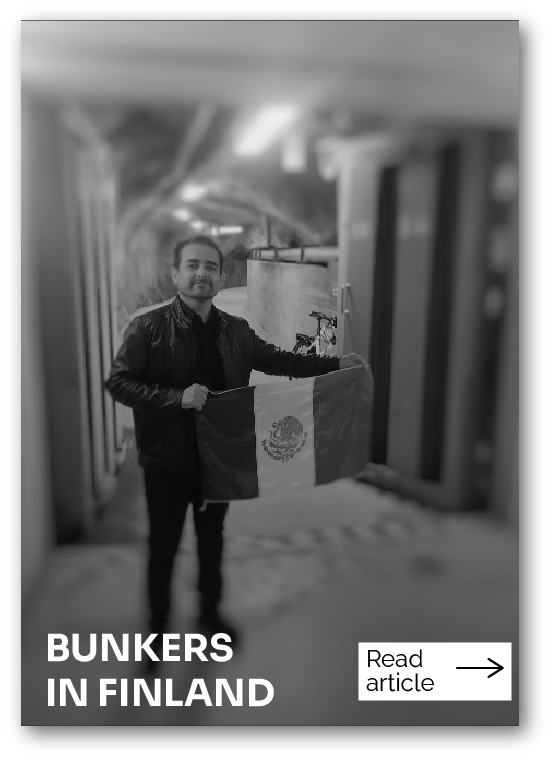The appointment
The appointment was at 17:00 hours in Helsinki on August 21st, 2023, the location on Google maps was sent to me via email, everything was ready, my flight from Mexico City to Copenhagen arrived the night of August 20, the next day very early with a piercing Jet-lag I took the flight to Helsinki, arriving at 11:00 the day of the appointment, both flights took off and landed on time.
Let’s get to it! The map marked a specific location under coordinates, the name in Finnish language and a legend that said, “it is difficult to find, follow the signs to the GYM”, the coordinates took me to an esplanade of dirt and rocks, next to a school building, I kept walking, I could not see anything related to a GYM, not satisfied with not finding what I was looking for, I explored, went all around the building and even approached metal doors of the building hoping to find or see something, and still nothing.
I return to the georeferenced point, suddenly looking at the map, I look at my feet, I see that I am standing on a large rock, in front of me I see an air pipe just peeking out of the rocky terrain and I said to myself, I’m on the Bunker! and indeed I was, I went down the rocky esplanade on one side and in the other side there was a door with a gallery that served as an air entrance, the announcement said “Kunto Sali” however the message said GYM and indeed in Finnish “Kunto Sali” is fitness room or gym, I had arrived. Here begins the visit.
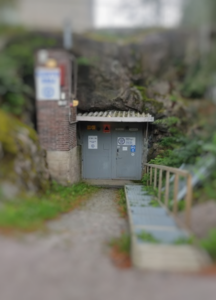
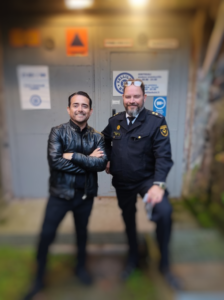
Image 1. Exterior entrance to the bunker in Helsinki (left), Tomi Rask and I (right)
For many years as a professional I am never late for my appointments, as well as in my arrivals on time at the airport or at a bus terminal. Therefore, my trips are scheduled, even more, being in a city I did not know, without a car, without a local guide, I did not want to be late for that huge appointment, which was scheduled at 16:45. I was there on the dot at 16:00 hours, at 16:05 a vehicle arrives and it was Tomi Rask, Emergency Planning Officer of the Rescue Department of Helsinki, Finland, worldwide known in his area.
Upon his arrival I recognized him immediately, I introduced myself, we exchanged mutual thanks, on my part for the opportunity to know that wonderful work of engineering and civil defense, and on his part for having gone there, more than 11,000 kilometers away and with 9 hours of time difference, and where 16:05 was 07:05 for me, without having slept at all the night before and with an international flight the day before, I was excited and expectant.
Tomi Rask got down to work with me, the first impression he gave me with his uniform and his body language was of authority, the second was of an educated and committed person, then I found that in addition to these attributes, he was also a situational leader, who treats others according to their position, their responsibility and their personality, a leadership that according to the situation applies different types of leadership and is very appropriate for crisis situations or where you seek to harness and promote the talents of others.
The bunker
This was not an “underground concrete cube” this huge space to 1,000 people is a functional whole, it has access and exit areas, operational areas, and secure lounges, I was invited everywhere, but there were several doors that I did not enter that were supposed to be some warehouses or small offices.
The bunker has operational areas (what every space of its kind has): Engine room, NBC filtered ventilation system, regular and emergency electrical system, medical room, staff and strategic control offices, communications room, which was small but robust equipment, the walkie talkie analog radios in times of emergency such as nuclear attacks or conventional warfare, are easy systems and are the most valuable. An expensive smartphone with 4 cameras and a zoom that reaches the moon, would be an useless element in an event of these characteristics. That is the paradox that we live today, we fill ourselves with things that in complex moments will be of no use.
The shelter has an access tunnel of 60 meters long, this curved tunnel built into the rock has the objective that in the event of a nearby explosion its length and curvature act as a shock absorber or energy dissipator, at the end of this is the real entrance. The entrance is an access system made up of three doors separated by barely 2.5 meters from each other, each door fulfills its function, the first is a blastdoor, the second door is a fire door and the last one is an airtight door.

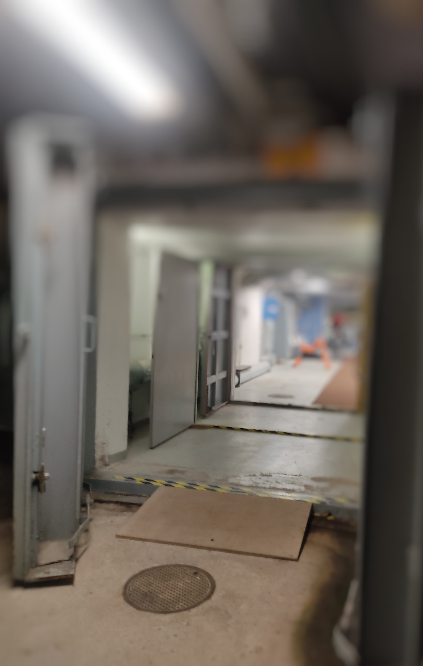
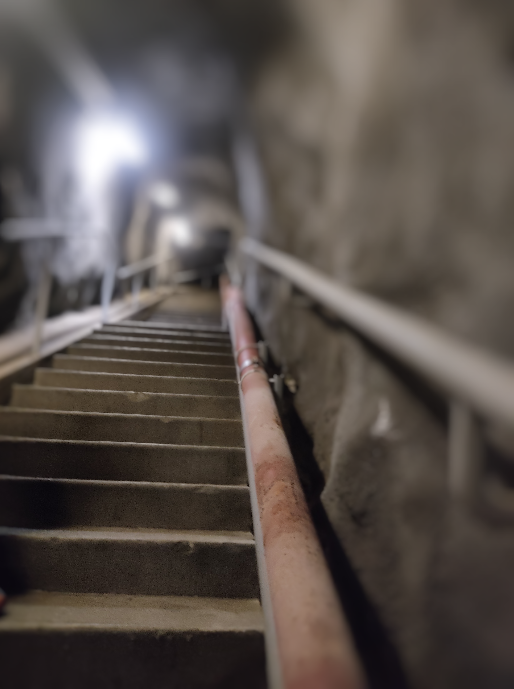
Image 2. 60 m long access tunnel (left), door system (center) and emergency exit (right).
The bunker or public shelter is visible to anyone who knows how to see it, and in times of peace as it is now a gymnasium, it is rented to a person who manages it as such, and must allow the necessary preventive maintenance to be carried out, also, during training for civil emergencies, dozens of people walk around it, trying to learn how to operate it just in case.
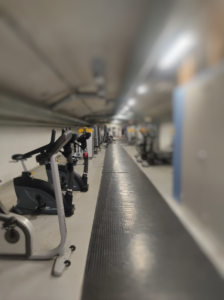
Image 3. Gym equipment, for public indoor use
In its large rooms, such a quasi-apocalyptic shelter, people come in and out as in any gym, wearing shorts, with their sports bags, and those who are inside use the equipment under a specific routine, a rather curious scene.
MEP installations (mechanical, electrical, and plumbing systems)
The shelter has mechanical, electrical, plumbing and communications installations, among others, as well as systems for crossing the walls with MEP installations that are of great importance, this kind of spaces are pressurized in critical (warfare) times to prevent the entry of chemical and biological agents and radioactive particles that travel through the air.

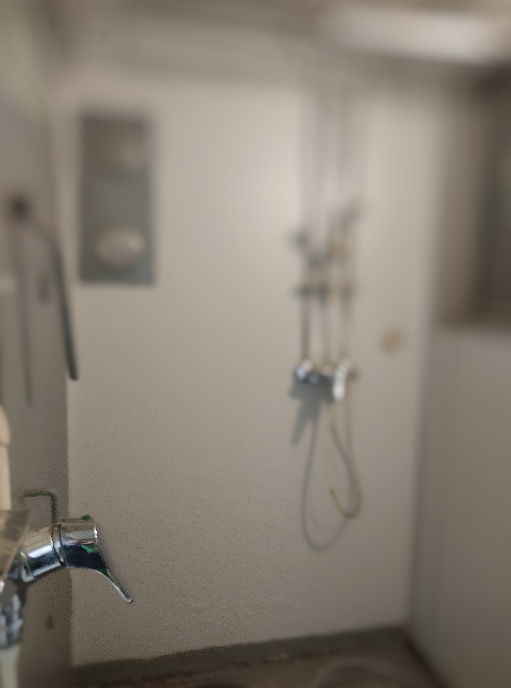
Image 4. MEP and HVAC installations
The rehearsal
I was there, at a rehearsal to get the Bunker systems up and running, with volunteers and the fire department from that area of Helsinki, the people were kind to me, amazing people.
It is interesting how a group of civilians and government are able to put into operation such an important facility, all as a perfect synchronized team put into operation all systems, the training or test set up lasted more than 2 hours, time needed to verify and set up all critical systems that must work before and during the event or emergency.
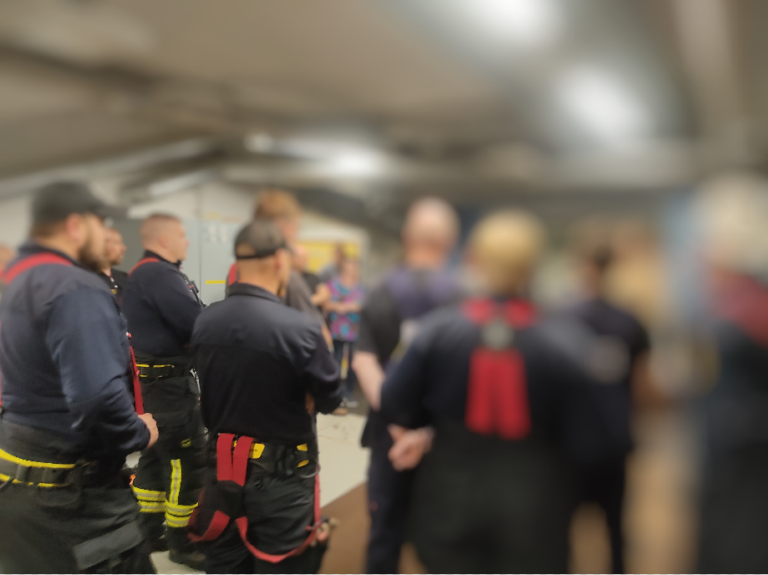
Image 5. Volunteers and the fire department gathered inside the Bunker, listening to Tomi Rask
The Situation
Why are the civilian population preparing?
First to highlight that Helsinki as the capital of Finland, and also an important world capital of northern Europe, unlike other capitals does not have skyscrapers or freeways, is a low landscape, with buildings of medium height up to 6 levels, a Nordic style of peculiar beauty and is a unique architectural style called Scandinavian Design, this design transcends to its infrastructure to reach elements such as furniture, electrical equipment, among others stuffs; then, we must emphasize that if they do not build their buildings upwards as the big capitals, they do it downwards, Finland has a complex network of bunkers, and in early 2020 Finland had 54,000 civil defense shelters with capacity for a total of 4.4 million people, and specifically Helsinki has about 5,500 shelters to almost a million people, that protect them against CBRNE attacks (BBC JC Cueto, 2022).
If we look at the global context, Finland is a country without external strategic support, such as that given by NATO to its members, then, within its culture is self-protection, doing whatever has to be done to defend itself; one of its strategists is neutrality, but neutrality has a condition, you must have how to defend yourself to be neutral, as my Swiss mentor points out, “If you want to be neutral, you have to be able to defend yourself, (C. Vuilleumier, 2023).”
It is no secret that Finland during the wars with Russia in the late 30’s of the last century, lost territories and was left alone in a war against a country that surpasses it in military strength and troops, although today things look different, Finland manages its accession to NATO, also has nearly 5 million soldiers between troops and reservists, is a strict nation in terms of military service and its population is willing and proud of that, to this adds its civil defense network through subway bunkers scattered throughout its major cities. All this makes Finland a country prepared for the worst scenarios, and I had the opportunity to be there, to see and observe up close such valuable strategic preparedness teaching.
The invasion of Ukraine in February 2022 by Russia alerted citizens to be more intentional in their preparation, therefore, they are currently conducting exercises and training to prepare the bunkers. These exercises involve citizen volunteers and the government, a well-orchestrated civil defense dynamic with a view to be successful and replicated worldwide, because it is not only applicable to war conflicts, there are natural phenomena and industrial accidents that can affect the civilian population.
What did I learn and reflect on?
It is honest to say that in a visit of 3 to 4 hours the information is dense to be captured, processed and put in order for its use, however, I bring a teaching, it is useless to have a great fortress or bunker if you are not willing to make it work for your benefit, if you train and do not learn to tune it in the least amount of time, because in the training is to ensure the correct actions in reality.
Although being there filled me with emotion, one must understand and make others understand that it is a space for crisis management, a space for delaying physical damage, and that it deserves respect; Throughout this time in which I design, build and offer civil defense spaces, I have learned to perform my work with an attitude of respect towards clients, because these spaces cannot be treated or designed for the client as if it were the house of their dreams, they are spaces to protect themselves from a nightmare, and deserve an attitude where there is respect, knowledge, and skills with a lot of professionalism.
My thanks to Tomi Rask, his team of volunteers and best wishes to all of Finland.
Victor Manuel ITURBE-EK
Founder & Lead Project Manager SBMX®
Mexico, August 2023
GLOSSARY
MEP: Mechanical, electrical and plumbing systems (mechanical, electrical and plumbing)
CBRNE: Chemical, Biologic, Radiation, Nuclear and Explosive
HVAC: Heating, ventilating, and air conditioned (heating, ventilating, and air conditioned)
NBC: Nuclear, Biologic and Chemical
GYM: Gymnasium (sports hall)
NATO: North Atlantic Treaty Organization

